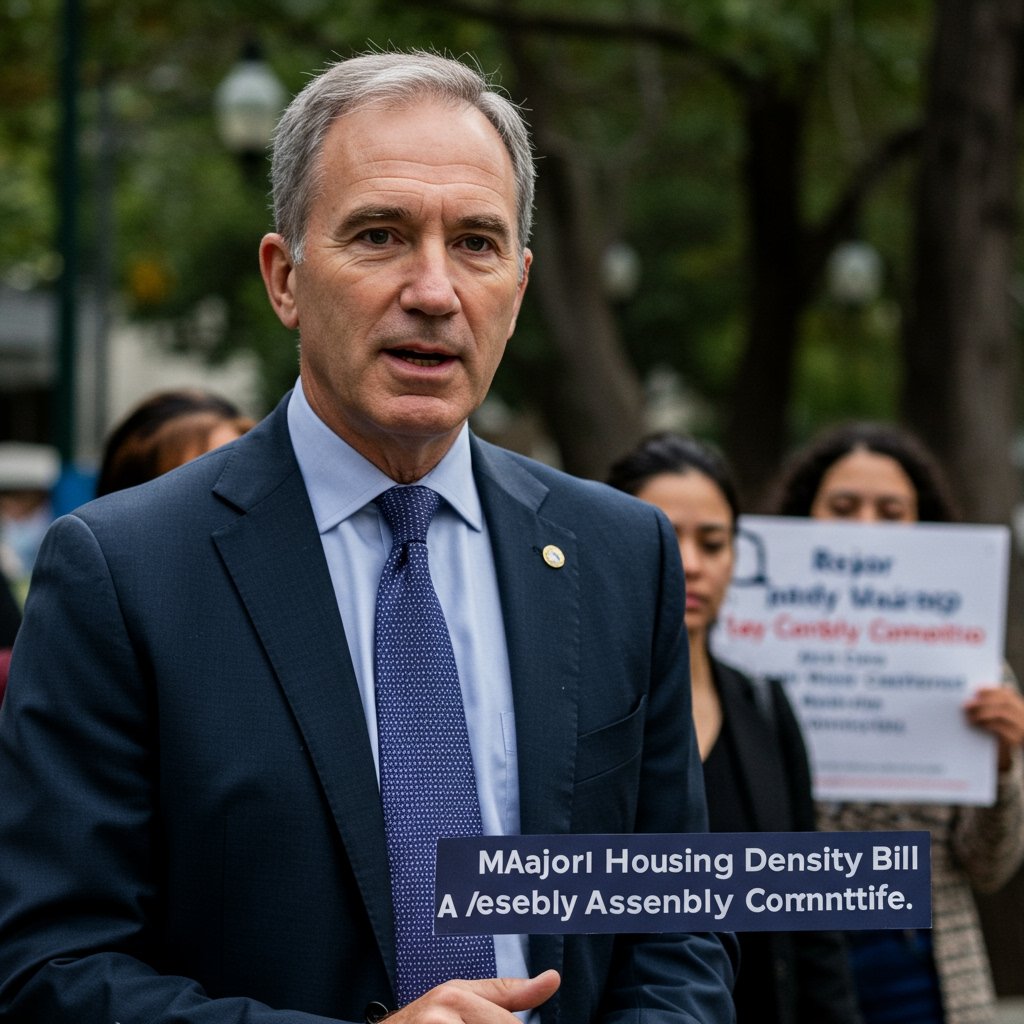California Assembly Committee Advances Landmark Housing Density Bill AB 888
Sacramento, CA – In a move that could reshape urban landscapes across California, a pivotal committee within the State Assembly today approved Assembly Bill 888, a legislative proposal specifically engineered to significantly boost housing density, particularly in areas well-served by public transit. The bill, marked by its ambitious scope and the contentious debate it has sparked, represents a direct effort to confront the state’s persistent and widely acknowledged housing crisis.
The measure, identified as Assembly Bill 888, successfully navigated the Assembly Housing and Community Development Committee. Its passage through this crucial initial legislative hurdle came via a vote of 8-3, indicating a clear majority of committee members supported its advancement despite vocal opposition.
Mandated Density Near Transit
The core mechanism of AB 888 involves a statewide mandate directed at local governments. Should the bill become law, cities and counties would be required to permit the construction of multi-unit residential buildings reaching up to six stories in height within a half-mile radius of major public transit stops. Crucially, this mandate would apply irrespective of existing zoning laws. This aspect is particularly impactful, as it proposes to override local land-use regulations that may currently restrict building height or density in these transit-rich zones.
The proponents of AB 888 frame it as a necessary and bold step toward unlocking development potential in areas already equipped with infrastructure and transportation options. By allowing denser housing near transit, they argue, the state can facilitate the construction of thousands of new homes where they are most needed and where residents can potentially rely less on personal automobiles.
Proponents Champion AB 888 as Housing Crisis Solution
The coalition supporting Assembly Bill 888 is diverse and includes high-profile backing. Among its key proponents is Governor Newsom’s administration, which has made addressing the housing shortage a central policy objective. They are joined by influential housing advocates, such as the California Housing Consortium, alongside other groups dedicated to increasing housing supply and affordability across the state.
These proponents articulate several primary arguments for the necessity of AB 888. Foremost among them is the urgent need to alleviate California’s severe housing shortage. They contend that decades of restrictive land-use policies and a complex, often slow, approval process have stifled construction and driven housing costs to unaffordable levels for many residents. AB 888 is seen as a vital tool to streamline development, particularly in urban cores where transit access is readily available.
Furthermore, proponents highlight the environmental and traffic benefits they believe would result from the bill. By concentrating new housing development in existing urban areas near transit, they argue, AB 888 would reduce the pressure to build on undeveloped land and decrease residents’ reliance on cars, thereby helping to lower greenhouse gas emissions and ease traffic congestion.
Opponents Raise Concerns Over Infrastructure, Displacement, and Local Control
However, Assembly Bill 888 is not without its significant detractors. Strong opposition was voiced during the Assembly Housing and Community Development Committee hearing by groups representing local governments and concerned residents. Prominent among the opponents is the League of California Cities, an organization representing municipal governments across the state, as well as various resident groups who expressed skepticism and alarm regarding the bill’s potential impacts.
Opponents presented a range of concerns during their testimony. A key area of worry revolves around infrastructure capacity. They question whether existing local infrastructure – including water, sewer systems, roads, and schools – can adequately support the significant increase in population density that AB 888 could trigger within the mandated half-mile radius of transit stops. They argue that the bill places a burden on local resources without necessarily providing the means to upgrade necessary infrastructure.
Another major concern raised by opponents is the potential for displacement. Mandating higher density in established neighborhoods, particularly those that are currently more affordable, could lead to increased property values and rents, potentially pushing out existing residents and businesses, including vulnerable populations. Opponents voiced fears that the very communities the bill aims to serve could face unintended negative consequences.
Perhaps the most fundamental objection from opponents, particularly from the League of California Cities, centers on the erosion of local planning authority. They argue that the power to make decisions about land use and development should primarily rest with local governments, which they believe are best positioned to understand the unique needs and characteristics of their communities. AB 888’s provision to override existing local zoning laws is seen as a direct challenge to this principle of local control and self-governance.
The Path Ahead for AB 888
The Assembly Housing and Community Development Committee hearing provided a platform for proponents and opponents to articulate their perspectives, underscoring the complex trade-offs inherent in addressing California’s housing crisis through legislative mandates. Despite the strong opposition voiced, the bill secured enough votes to advance.
With its successful passage through the committee, Assembly Bill 888 now moves forward in the legislative process. Its next stop is the Assembly floor, where it will be subject to further debate among the full body of Assembly members. The floor debate is expected to be robust, as legislators weigh the potential benefits of increased housing supply and reduced car dependence against concerns regarding local autonomy, infrastructure strain, and potential community disruption.
The outcome of the vote on the Assembly floor will be critical in determining the future of this controversial yet potentially transformative piece of housing legislation. The bill’s journey highlights the deep divisions and difficult choices facing California policymakers as they grapple with one of the state’s most pressing challenges.



















